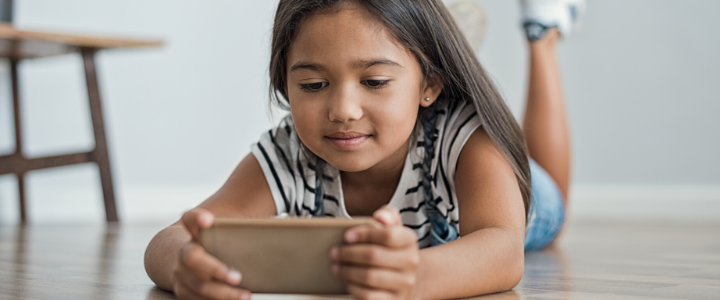I’m one of many parents who, during this “new normal,” has children (ages 9 and 6) who currently interact with their screens more than with each other or their parents. My husband and I have full time jobs, so distraction doesn’t bode well while we are working at home. We’re also former educators, so we know enough of the science and recommendations around “screen time” to understand what is happening with our kids.
And we don’t like it one bit.
If you are reading this, you might be in our frustrating position, and like us, you may have just needed to bite the bullet and free the children to go into the abyss of screen time and the Internet. To soften the blow, allow me to share a few insights I’ve learned over the years about the idea of “screen time.”
- Today’s Generation Z is growing up as digital natives, while many of us grew up as digital immigrants. The hard truth is, digital natives have no idea what to do without technology. Their lives are so entwined with technology that they cannot separate themselves from it, unlike us, who can exist without engaging with tech because we have done it before, in the 70’s, 80’s, and even into the early 90’s. It’s also worth mentioning that the technology we are all using is supported by purposeful advertising designed to make most humans engage for extended periods of time.
Straight up: we’ve got to understand that today’s kids are not defying us, and most are not truly addicted to the technology. They cannot help it. - Asking kids to completely abandon their screen time, given all the above, is like asking a hand to stop using its thumb for a while. It’s not happening. However, it’s wise to encourage taking breaks occasionally. Even with active screen use, your brain and your eyes need breaks. The 20-20-20 Rule works well, but we also advocate for 20 minutes on, 20 minutes off so kids can better control their distraction time. This isn’t easy for you or the child, but it’s good for both of you to maintain this ritual.
- All Screen Time is Not Created Equal. The issue with “screen time” isn’t so much that it is collectively bad for kids. It’s that kids, for the most part, are passive consumers of technology. They are having entertainment delivered TO them, versus using the technology as a tool to create their own stuff. According to Sandy Oreo, a secondary teacher (via EdSurge):
Studies show that children respond to activity-based programming when it is fun, designed for them and encourages imitation or participation. These can include learning a new skill like coding games or websites, creating music, writing and publishing stories or poetry, or simply anything else that requires them to use the creative side of their brains. Given that screen time will continue to play a big part in kids’ lives, let’s help guide them to smarter choices.
All in all, I hope this helps to provide a wider perspective on kids and technology. We can take the opportunity to understand the “whys” behind behaviors and reactions.
If you’ll excuse me, I have to tell my kids it’s time for their 20 minute break. Wish me luck!






